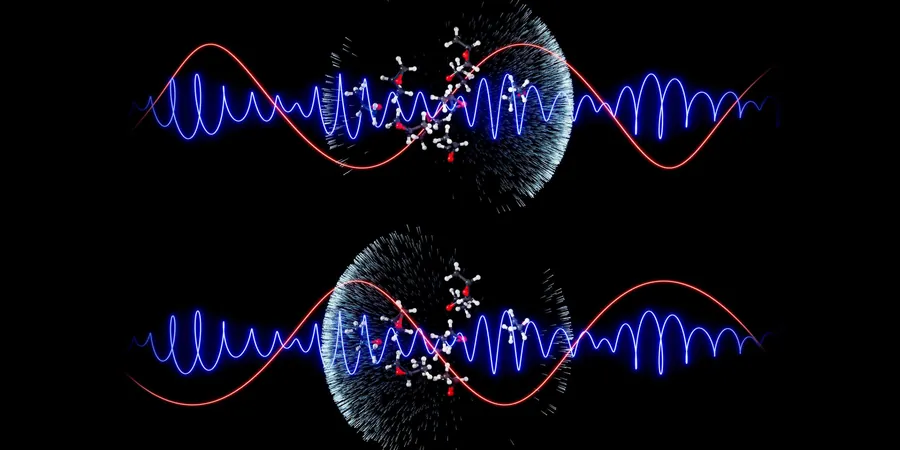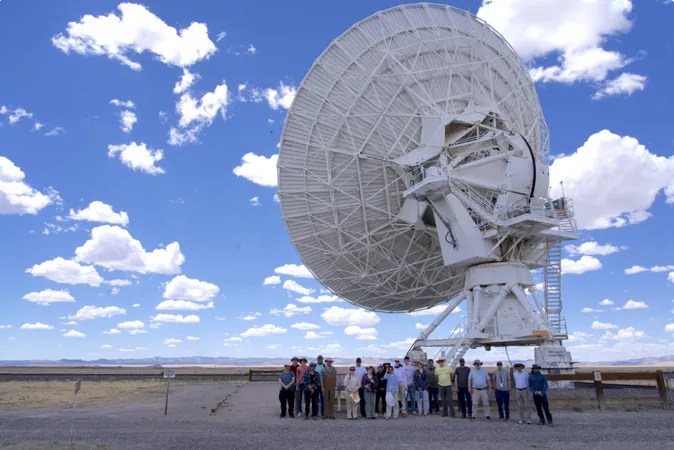
Electrons Unleash Their Handedness in Stunning Attosecond Spectacle!
2025-08-27
Author: Sarah
Revolutionary Breakthrough in Electron Dynamics
In a groundbreaking study, chemists at ETH Zurich have harnessed ultrashort, rotating bursts of light to explore and manipulate how electrons dance in mirror-image molecules. This research uncovers that chirality—often seen as a mere structural attribute—is deeply intertwined with the very movement of electrons.
The Mystery of Chirality: More Than Just Structure
We've all learned that our left and right hands, despite being structurally identical, are not interchangeable. This concept of "handedness" applies to many molecules in the universe; they exist in two distinct mirror-image forms that, while strikingly similar, function quite differently. This phenomenon is known as chirality, and it has profound implications in biology, chemistry, and medicine.
Chiral molecules serve as crucial components of life, with DNA, amino acids, and proteins all exhibiting handedness. The effectiveness of chiral drugs can vary drastically depending on their specific chirality, making this research not just academic but potentially life-saving.
Electrons Behaving Differently
Professor Hans Jakob Wörner and his team have turned their attention to a largely unexplored aspect of chirality: how the tiniest constituents of atoms—electrons—move differently in left-handed versus right-handed molecules. Their pioneering research, recently published in Nature, sheds light on this fascinating issue.
Attosecond Revelations: Watching Electrons in Real Time
The researchers focused on an intriguing effect generated when chiral molecules are illuminated with circularly polarized light—a type of light that spirals like a corkscrew. Astonishingly, as light energizes these molecules, it can cause electrons to shoot out in varying directions, dictated by the molecule's chirality and the light's rotation.
Not only did they measure this phenomenon, known as photoelectron circular dichroism (PECD), but they also succeeded in amplifying and even reversing the effect. They achieved this groundbreaking measurement using innovative attosecond pulses, capable of resolving events on a breathtaking timescale of one billionth of a billionth of a second.
A New Era for Understanding Chirality
This remarkable study opens a new chapter in our comprehension of chirality. It emphasizes that chirality should not solely be viewed as a fixed structural trait but as an active, dynamic behavior of electrons within chiral systems. Former postdoc Meng Han notes that this has been a largely hypothetical notion until now, made feasible only through advanced technology.
Implications for the Future
The implications of this research are vast. The new attosecond flashes could enable a more sensitive assessment of chirality in pharmaceuticals and provide insights into the fundamental origins of chirality in biological systems. Moreover, this cutting-edge technique may pave the way for further explorations into time-resolved chiral processes at an electronic level, ushering in innovations in fields such as information technology, spintronics, molecular machines, and biosensor development.




 Brasil (PT)
Brasil (PT)
 Canada (EN)
Canada (EN)
 Chile (ES)
Chile (ES)
 Česko (CS)
Česko (CS)
 대한민국 (KO)
대한민국 (KO)
 España (ES)
España (ES)
 France (FR)
France (FR)
 Hong Kong (EN)
Hong Kong (EN)
 Italia (IT)
Italia (IT)
 日本 (JA)
日本 (JA)
 Magyarország (HU)
Magyarország (HU)
 Norge (NO)
Norge (NO)
 Polska (PL)
Polska (PL)
 Schweiz (DE)
Schweiz (DE)
 Singapore (EN)
Singapore (EN)
 Sverige (SV)
Sverige (SV)
 Suomi (FI)
Suomi (FI)
 Türkiye (TR)
Türkiye (TR)
 الإمارات العربية المتحدة (AR)
الإمارات العربية المتحدة (AR)